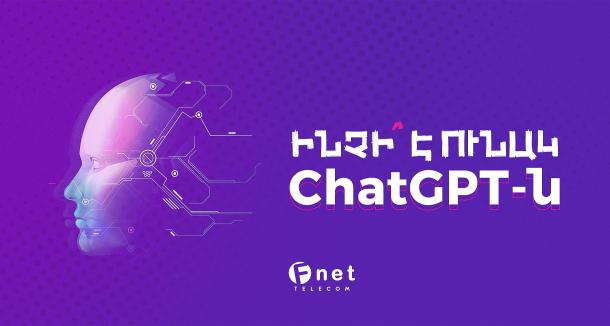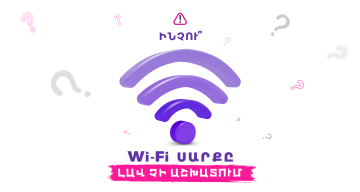18 February 2023

ChatGPT is a conversational language model developed by OpenAI. It is based on the GPT-3 (Generative Pre-trained Transformer 3) architecture and has been trained on a large corpus of text data.
And so what is ChatGPT capable of?
Text generation: ChatGPT can generate text based on a prompt, making it useful for tasks such as creative writing, story generation, and more.
Chatbot development: ChatGPT can be fine-tuned to perform as a chatbot, allowing it to respond to questions and have conversational interactions with users.
Question answering: ChatGPT can be used to answer questions based on the text it has been trained on, making it useful for information retrieval and knowledge-based applications.
Text completion: ChatGPT can be used to complete sentences or paragraphs based on a given prompt, making it useful for tasks such as language translation, summarization, and more.
Sentiment analysis: ChatGPT can be fine-tuned to perform sentiment analysis, allowing it to determine the emotional tone of a given piece of text.
Some advantages of ChatGPT include:
High accuracy: With its large number of parameters, ChatGPT is capable of generating high-quality, human-like text with a high level of accuracy.
Flexibility: ChatGPT can be fine-tuned for a variety of language tasks such as chatbot development, question-answering, language translation, and more.
Ease of use: ChatGPT is designed to be easy to use, with a simple API that can be integrated into a variety of applications.
Scalability: As a cloud-based solution, ChatGPT can be easily scaled up or down to meet the needs of different applications and users.
Large training corpus: ChatGPT has been trained on a massive amount of text data, which provides it with a wide range of knowledge and enables it to handle a variety of conversational topics.
Continuous improvement: OpenAI is continually improving the ChatGPT model by incorporating new data and research, allowing it to maintain its high level of accuracy over time.
ChatGPT is not inherently connected to the internet, but it can be integrated into applications that have an internet connection. When integrated into an application, it can access the internet to retrieve information, generate text, and perform other tasks. However, some implementations of ChatGPT may be designed to run offline, without an internet connection, for privacy or security reasons. In these cases, the model is typically run on a local machine or device and is limited to the data and resources available on that device. It's worth noting that the use case and implementation of ChatGPT can vary, so the level of connectivity to the internet can depend on the specific requirements of the application and the design decisions made by the developer.
These are just a few examples of what ChatGPT can do. The model's versatility and ability to perform a wide range of NLP tasks make it a powerful tool for developers and researchers working in the field of AI.
ChatGPT can be useful for a wide range of professionals including:
Chatbot developers: ChatGPT can be used to develop conversational AI applications, making it an ideal tool for chatbot developers.
Data scientists and NLP researchers: ChatGPT can be used as a tool for NLP research and experimentation, allowing data scientists and NLP researchers to explore new approaches and techniques for language generation and processing.
Content creators: ChatGPT can be used to generate text for creative writing, story generation, and other content creation tasks, making it a useful tool for writers, journalists, and other content creators.
Marketing and advertising professionals: ChatGPT can be used to generate ad copy, product descriptions, and other marketing materials, making it a useful tool for marketers and advertisers.
Customer service and support teams: ChatGPT can be used to develop chatbots for customer service and support, allowing companies to provide quick and efficient service to their customers.
The question is can we trust ChatGPT and if the information is accurate?
The accuracy of the information provided by ChatGPT depends on several factors, including the quality of the training data and the task it was trained on, as well as the specific implementation and fine-tuning of the model. It's also worth noting that the accuracy of ChatGPT can vary depending on the specific task it is being used for. For example, the model may perform well on certain NLP tasks such as text generation or sentiment analysis, but may not be as accurate when it comes to more complex tasks such as question answering or machine translation. To ensure the best results, it is important to carefully evaluate the accuracy of the model for the specific task and implementation and to continuously monitor and refine the model as necessary.
What makes ChatGPT different from other artificial intelligence chats?
ChatGPT sets itself apart from other AI chat systems in several ways including:
Model size: ChatGPT is one of the largest language models ever developed, with over 175 billion parameters. This large model size allows it to generate high-quality, human-like text and perform a wide range of NLP tasks with a high level of accuracy.
Fine-tuning capabilities: ChatGPT can be fine-tuned to specific tasks and domains, allowing it to generate text that is tailored to the specific needs of a particular application or use case.
Versatility: ChatGPT can perform a wide range of NLP tasks, including text generation, chatbot development, question answering, and more, making it a versatile tool for developers and researchers.
OpenAI ecosystem: ChatGPT is part of the OpenAI ecosystem, which includes a range of tools and resources for developing and deploying AI models, including the OpenAI GPT-3 Playground and the OpenAI API.
Briefly about the creators of ChatGPT OpenAI was founded in 2015 by a group of influential individuals in the technology industry, including Elon Musk, Sam Altman, Greg Brockman, Ilya Sutskever, John Schulman, and Wojciech Zaremba. Since its founding, OpenAI has become a leader in the field of AI research and development and has made significant contributions to the advancement of language models and other AI technologies. ChatGPT is one of OpenAI's most well-known and widely used models and has been used for a wide range of NLP tasks and applications.
Model size: ChatGPT is one of the largest language models ever developed, with over 175 billion parameters. This large model size allows it to generate high-quality, human-like text and perform a wide range of NLP tasks with a high level of accuracy.
Fine-tuning capabilities: ChatGPT can be fine-tuned to specific tasks and domains, allowing it to generate text that is tailored to the specific needs of a particular application or use case.
Versatility: ChatGPT can perform a wide range of NLP tasks, including text generation, chatbot development, question answering, and more, making it a versatile tool for developers and researchers.
OpenAI ecosystem: ChatGPT is part of the OpenAI ecosystem, which includes a range of tools and resources for developing and deploying AI models, including the OpenAI GPT-3 Playground and the OpenAI API.
Briefly about the creators of ChatGPT OpenAI was founded in 2015 by a group of influential individuals in the technology industry, including Elon Musk, Sam Altman, Greg Brockman, Ilya Sutskever, John Schulman, and Wojciech Zaremba. Since its founding, OpenAI has become a leader in the field of AI research and development and has made significant contributions to the advancement of language models and other AI technologies. ChatGPT is one of OpenAI's most well-known and widely used models and has been used for a wide range of NLP tasks and applications.
previous



